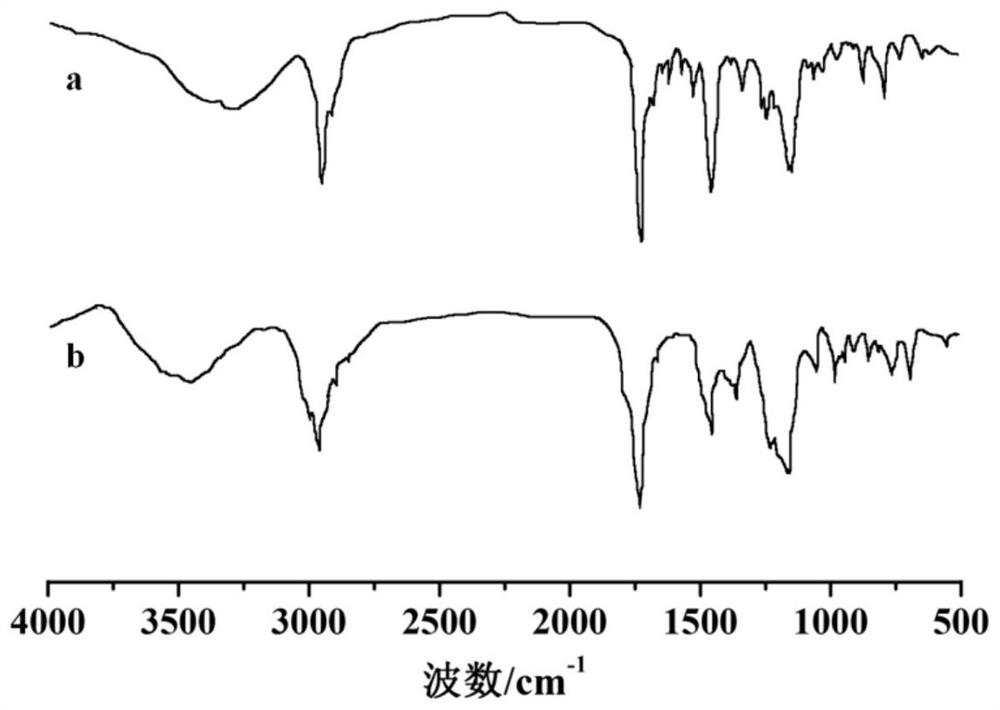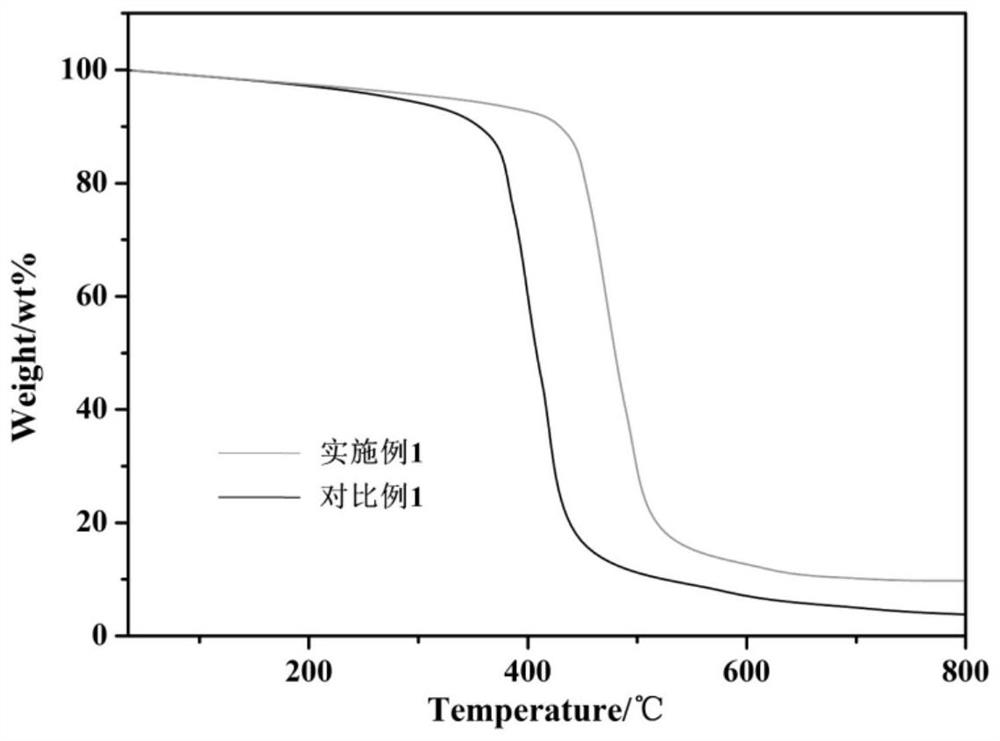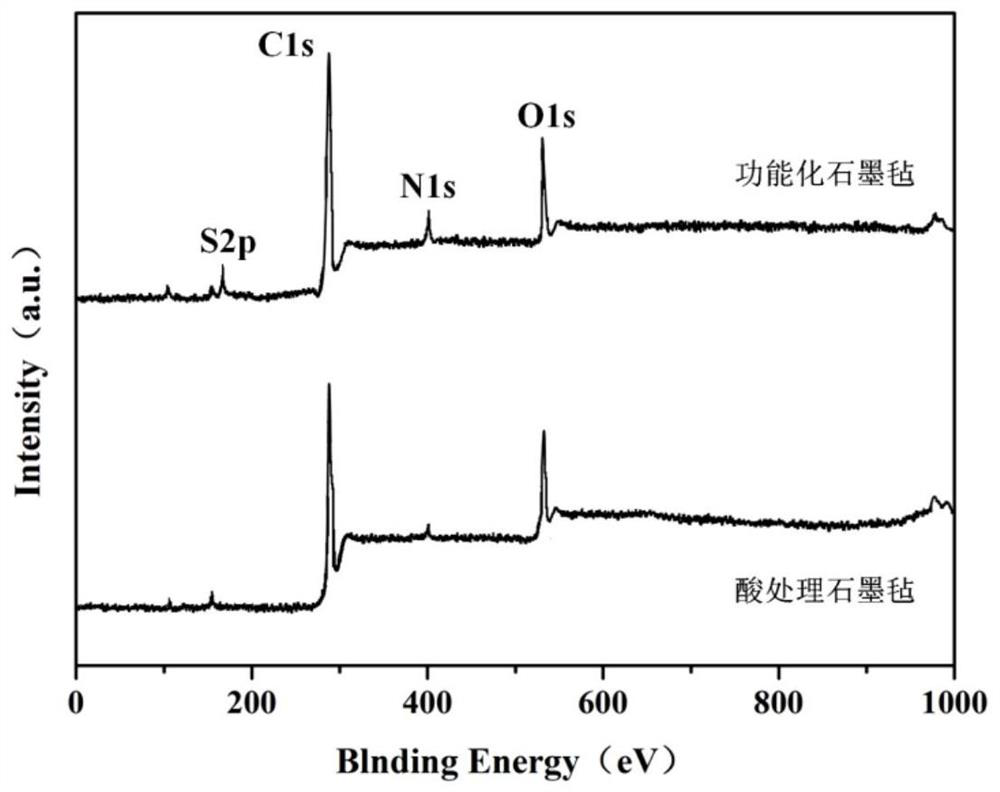Preparation method of high-flexibility carbon/resin composite material
A technology of resin composite materials and flexibility, applied in carbon fiber, electrical components, circuits, etc., can solve the problems of low strength and conductance of bipolar plates, low conductivity, etc., to improve thermal oxygen aging stability and improve electrical conductivity , the effect of increasing the conductivity
- Summary
- Abstract
- Description
- Claims
- Application Information
AI Technical Summary
Problems solved by technology
Method used
Image
Examples
Embodiment 1
[0035] Preparation of modified acrylic resin:
[0036] Take AA, MMA, BA, St and 4-(2-benzyloxycarbonylamino-4-thiazolyl)-4-carboxy-3-butenoic acid (2-methyl-2-buten-4-yl) ester , add butyl acetate solvent, mix evenly to obtain a mixed solution; then take butyl acetate, stir at a speed of 210rpm and heat up to 86°C, and then use a peristaltic pump to add dropwise to it for 4h; after the dropwise addition, keep warm for 3.5h, then add The initiator AIBN solution was kept warm for 3 hours; the temperature was lowered to 68°C, and part of the solvent and unreacted monomers were removed by vacuum distillation. At this time, the solid content of the copolymer was 60%; finally, the temperature was lowered to below 40°C and discharged.
[0037]Among them, AA, MMA, BA, St and 4-(2-benzyloxycarbonylamino-4-thiazolyl)-4-carboxy-3-butenoic acid (2-methyl-2-buten-4-yl) The molar ratio of esters is 1:0.71:1.1:0.64:0.95:0.6; the amount of initiator AIBN added is 0.47% of the total mass of m...
Embodiment 2
[0041] The difference between the preparation of modified acrylic resin and embodiment 1 is:
[0042] of AA, MMA, BA, St and 4-(2-benzyloxycarbonylamino-4-thiazolyl)-4-carboxy-3-butenoic acid (2-methyl-2-buten-4-yl) ester The molar ratio is 1:0.68:0.9:0.76:0.84:0.72; the addition amount of the initiator AIBN is 0.31% of the total mass of the monomers.
[0043] The difference between the preparation of the fuel cell bipolar plate and Example 1 is that the weight ratio of graphite felt to modified acrylic resin is 1:0.45, and the modified acrylic resin is prepared in this example; the thickness of the bipolar plate is 1.8mm.
Embodiment 3
[0045] The difference between the preparation of modified acrylic resin and embodiment 1 is:
[0046] of AA, MMA, BA, St and 4-(2-benzyloxycarbonylamino-4-thiazolyl)-4-carboxy-3-butenoic acid (2-methyl-2-buten-4-yl) ester The molar ratio is 1:0.62:0.84:0.77:0.82:0.65; the addition amount of the initiator AIBN is 0.54% of the total mass of the monomers.
[0047] The difference between the preparation of the fuel cell bipolar plate and Example 1 is that the weight ratio of graphite felt to modified acrylic resin is 1:0.27, and the modified acrylic resin is prepared in this example; the thickness of the bipolar plate is 2.3mm.
PUM
| Property | Measurement | Unit |
|---|---|---|
| thickness | aaaaa | aaaaa |
| flexural strength | aaaaa | aaaaa |
| thickness | aaaaa | aaaaa |
Abstract
Description
Claims
Application Information
 Login to View More
Login to View More - R&D
- Intellectual Property
- Life Sciences
- Materials
- Tech Scout
- Unparalleled Data Quality
- Higher Quality Content
- 60% Fewer Hallucinations
Browse by: Latest US Patents, China's latest patents, Technical Efficacy Thesaurus, Application Domain, Technology Topic, Popular Technical Reports.
© 2025 PatSnap. All rights reserved.Legal|Privacy policy|Modern Slavery Act Transparency Statement|Sitemap|About US| Contact US: help@patsnap.com



